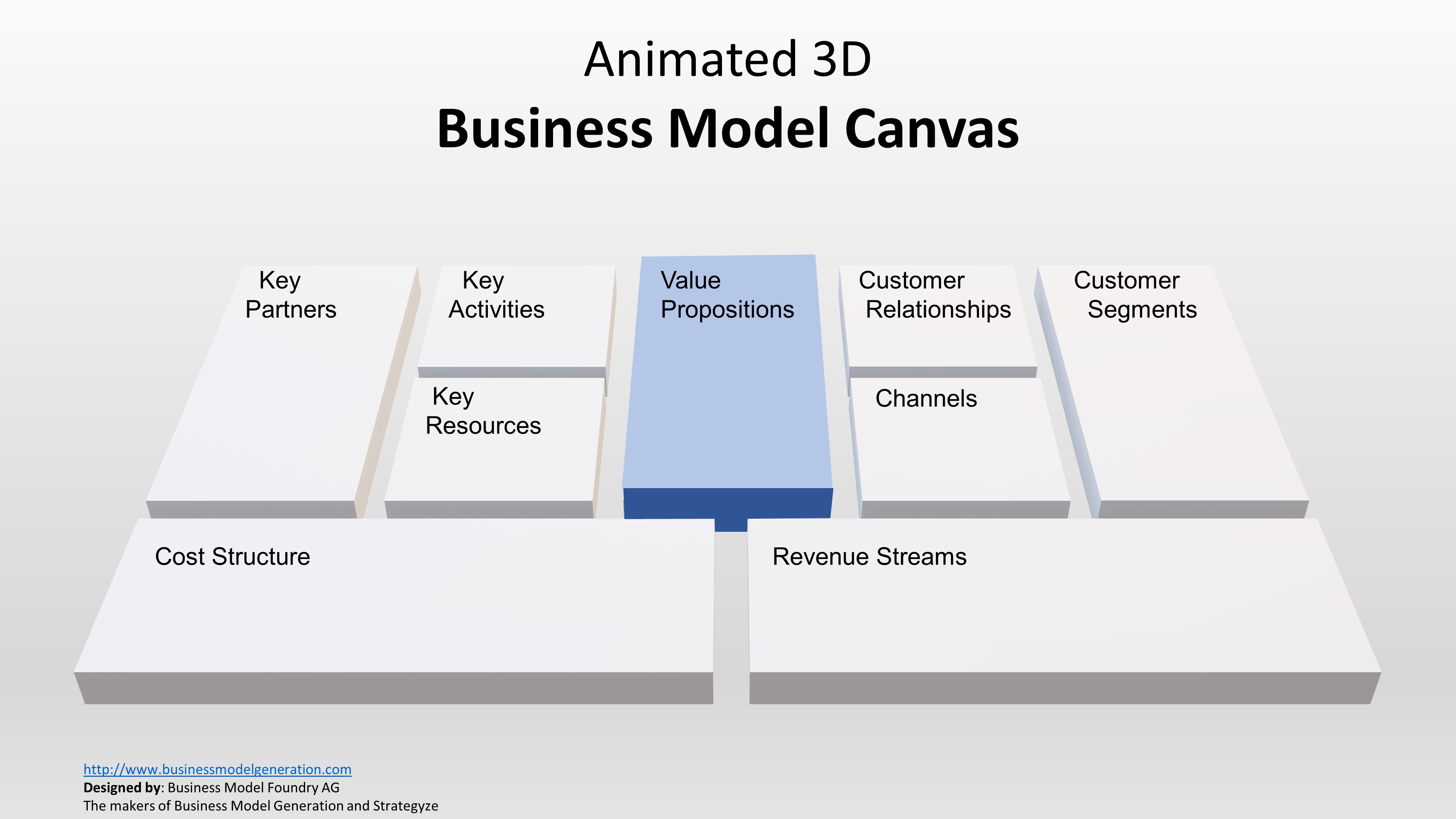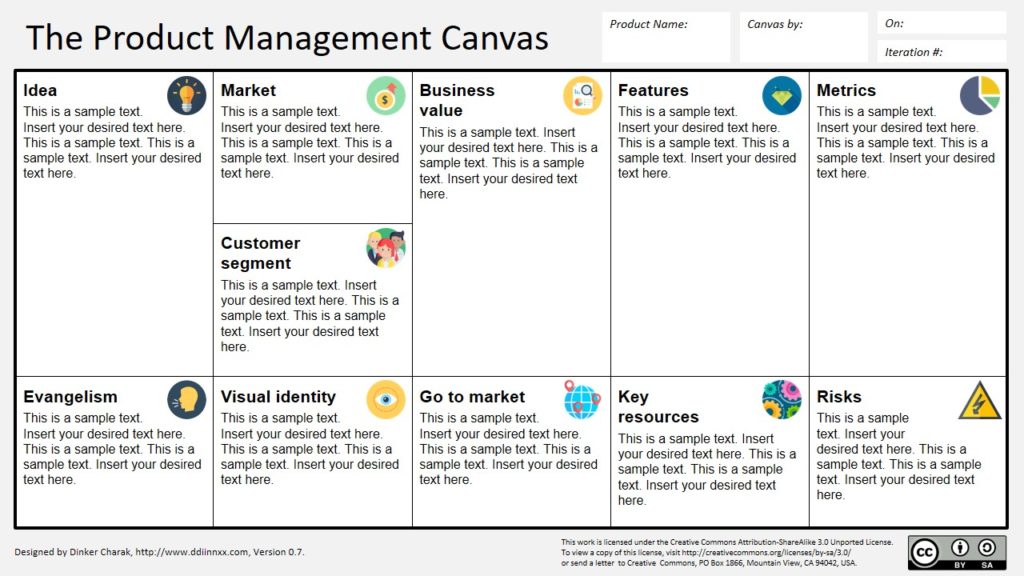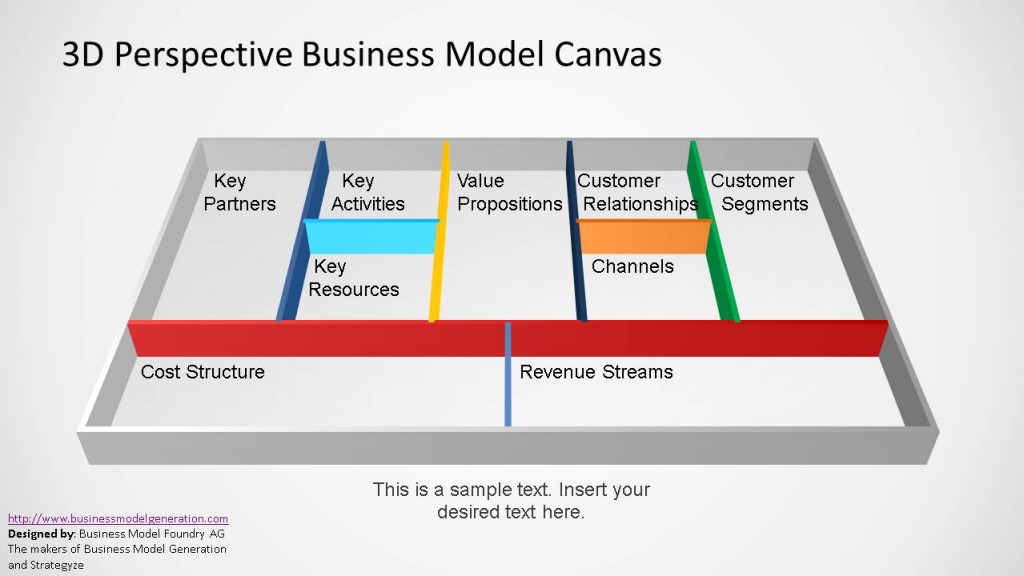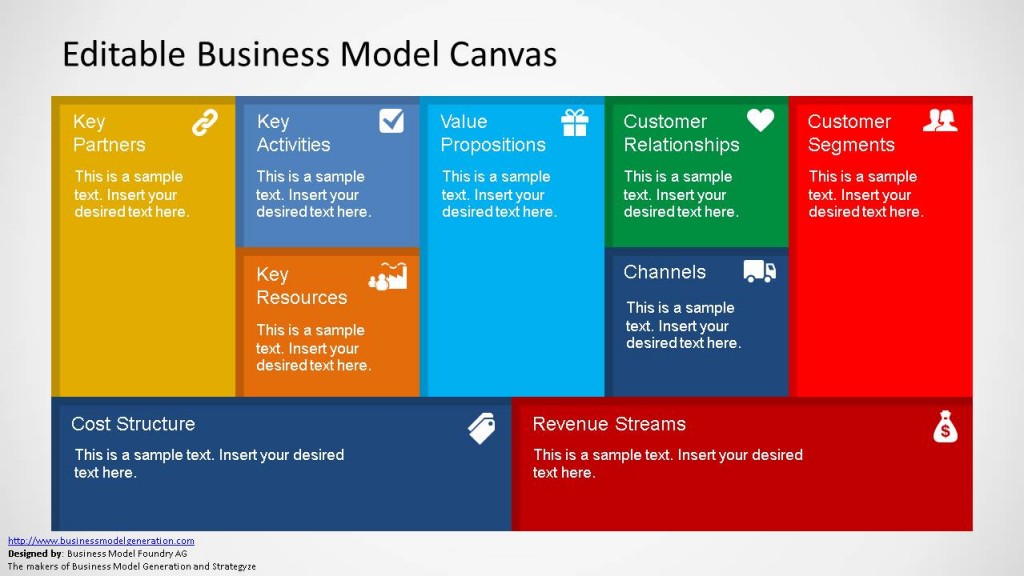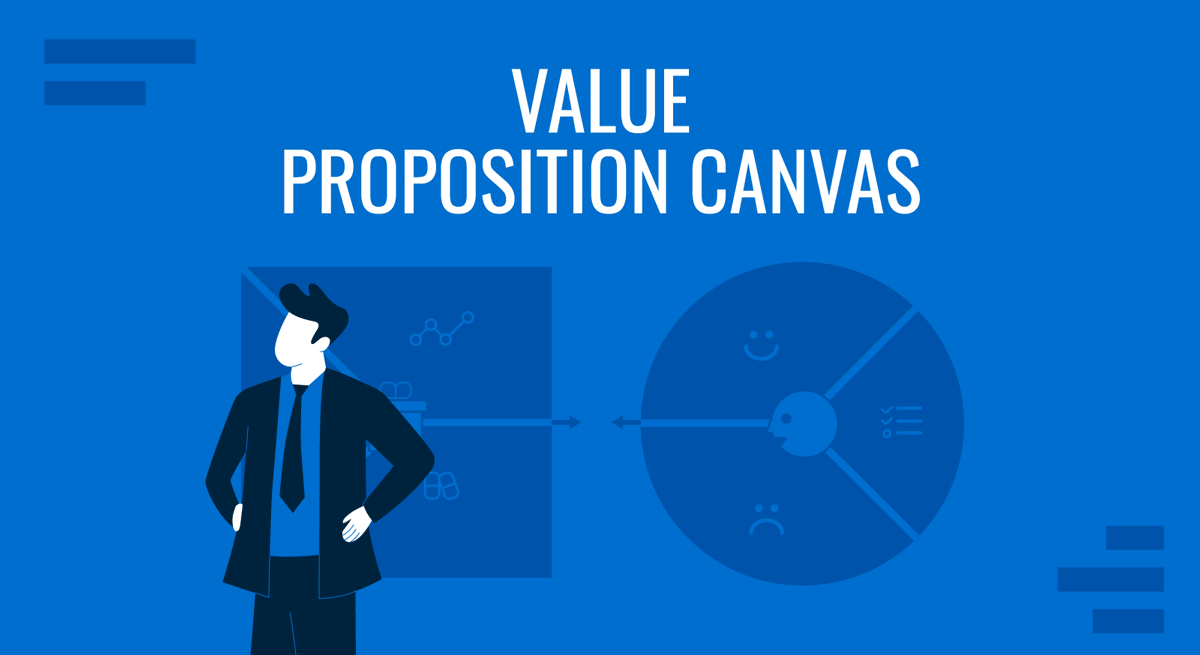
What do you think drives people to purchase a product? Is it an explosive marketing campaign? Perhaps promotional discounts? But here’s the truth. Although these strategies undoubtedly raise awareness about your product, they alone aren’t long-term solutions for building customer loyalty.
Once the novelty of the marketing campaign or the allure of discounts wears off, customers might revert to their previous purchasing patterns or switch to competitors offering similar promotions.
Thus, the real essence of sustained success hinges on developing a product that perfectly aligns with customer requirements. For this to happen, businesses should look deeply into their customer segment and understand its needs. Enter Value Proposition Canvas – a tool to guide businesses toward customer-centricity.
What Is a Value Proposition Canvas?
The Value Proposition Canvas is an instrument that facilitates comprehending customer needs and aligning them with the product or service offered. It is part of the larger Business Model Canvas developed by Alexander Osterwalder and Yves Pigneur. It comprises nine building blocks, providing a visual framework for developing, describing, and analyzing a business’s overall structure.
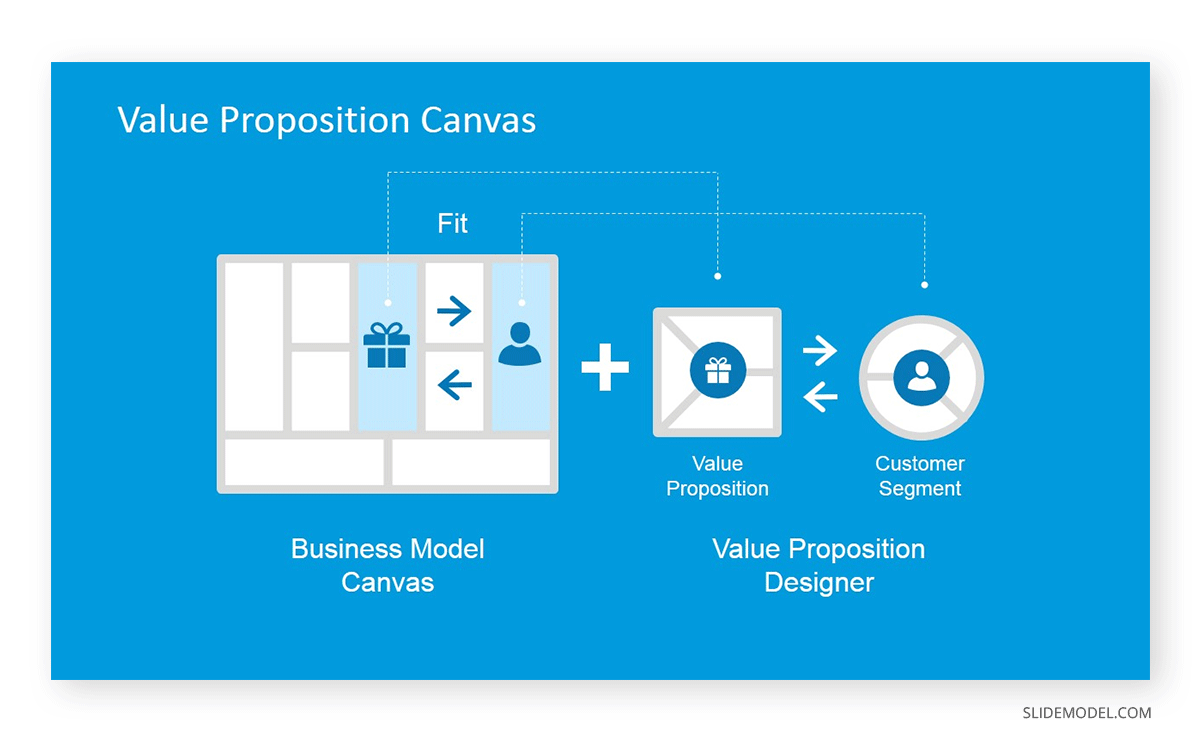
“Which of our customer’s problems are we helping to solve?” This is the guiding question for organizations building a Value Proposition Canvas. It compels businesses to dive into the world of their customers, understanding their pain points and looking for relevant solutions.
Components of the Value Proposition Canvas
Here’s what the Value Proposition Canvas looks like.
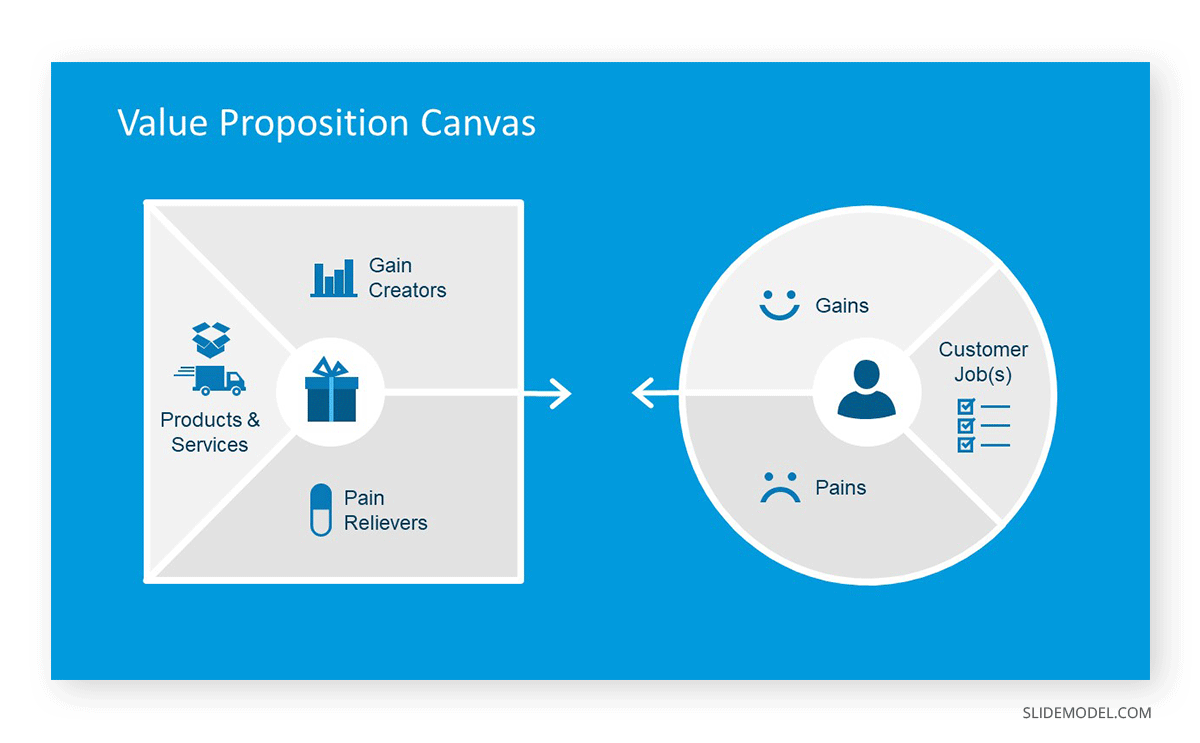
You’ll notice that it centers on the first two building blocks of the Business Model Canvas: the customer segment/profile on the right side and the company’s value proposition on the left side. This deliberate structure stems from the deep interdependence between these components, emphasizing the pivotal role of the customer in shaping the value proposition.
Let’s take a detailed look at each component.
The Customer Profile
The customer profile delves deeper into understanding the characteristics and needs of the target customers. It includes information about the tasks they are trying to accomplish (jobs), their pain points, and desired outcomes (gains).
1. Jobs
Understanding the specific jobs customers are trying to accomplish is fundamental to developing a customer-centric Value Proposition. As Theodore Levitt said:
“People don’t want to buy a quarter-inch drill. They want a quarter-inch hole!”
In other words, customers are not merely interested in buying a specific tool or item; they are more interested in the outcome or result the tool can help them achieve.
However, it’s important to consider that customers may have several motivations for purchasing a product or hiring a service. According to the Jobs-to-be-done Theory, customer requirements go beyond simply accomplishing a functional task. A job often has a social or emotional element and why an individual may choose to hire a product over an alternative.
Any car may get you from point A to point B, but you need a Porsche to fit into a high-end social circle.
2. Pains
The second element of the customer profile compels product designers to investigate the problems, challenges, or frustrations customers encounter in their journey. These could be obstacles, inefficiencies, or negative emotions that hinder customers from fulfilling the “jobs” they are trying to accomplish.
For instance, you might discover that excessive expenses burden your potential customers with their current providers or are receiving inadequate support. By gaining such valuable insights, you can strategically tailor your products to address these pain points and provide effective solutions.
Conducting customer surveys can be an excellent method to gather direct feedback from your target audience and know their challenges. You may also rely on your sales team to understand customer pain points. As they interact directly with prospects and customers regularly, they know firsthand about potential buyers’ obstacles and concerns.
3. Customer Gains
Customer Gains encompass all the positive outcomes and benefits customers hope to experience when engaging with a product, service, or brand. These benefits can be of various types, including functional, emotional, social, or financial advantages.
For instance, a smartphone’s functional gains could include a high-quality camera, fast processing speed, or long battery life. On the other hand, certain brands have the power to enhance customers’ social status or reputation, offering additional social benefits beyond the functional aspects of the product.
The Value Map
On the left side of the Value Proposition Canvas, we find the Value Map describing the products and services provided by an organization. Just like the corresponding right side of the model, this section consists of three crucial components: Products and Services, Pain Relievers, and Gain Creators, all of which directly correspond to the elements on the opposite side.
1. Products and Services
Products and Services are the fundamental components that form the core of a business’s value proposition. They represent the tangible or intangible offerings the business provides to meet its customers’ specific “jobs” or needs.
Whether they are physical products, digital solutions, or services, businesses should find a way to carefully craft their offerings to cater to the unique requirements and preferences of the prospects.
2. Pain Relievers
The goal is to help the target customers fulfill their needs and alleviate the pain points they encounter while fulfilling them. It’s crucial to understand that even if the end goal of a customer is fulfilled, a painful or frustrating experience with the service could easily prompt them to switch to a competitor.
Within the Value Map, the Pain Relievers section addresses the challenges, problems, or frustrations that customers experience. It outlines how the organization’s products and services make the customer’s journey more seamless and satisfying.
For instance, a common pain point customers often face with food delivery is the uncertainty of delivery time. The food delivery service can tackle this problem by implementing real-time order tracking, reducing the anxiety and frustration of customers. A straightforward resolution could be adopting a policy similar to the one implemented by EveryPlate, which assures customers of a delivery window of 30 minutes, reducing the anxiety and frustration of customers.
If it’s a financial pain, you may need to rethink your cost structure to provide affordable options to your target segment.
3. Gain Creators
This section of the canvas highlights how a business’s offerings fulfill the desired benefits of its customers, ultimately providing them with added value and delight. It includes the expected benefits and those that pleasantly surprise them.
Businesses should continuously seek ways to exceed customer expectations and offer unique and unexpected benefits that pleasantly surprise and delight their customers. This could involve introducing new features, personalized experiences, loyalty rewards, or even social impact initiatives that resonate with customers’ values.
Implementing the Value Proposition Canvas (Slack Case Study)
Let’s consider how you can work with the value proposition canvas in practice using Slack as an example.
The evolution of Slack’s success story is an interesting one. Before becoming the widely used and valued collaboration platform, Slack originated within a struggling gaming company called Tiny Speck.
Initially, Slack was intended to be an internal communication tool to help Tiny Speck’s development team collaborate more effectively. However, the game did not achieve the desired success, and Tiny Speck faced challenges.
On the other hand, the creators saw potential in Slack and started developing it to go to the market as a standalone tool.
Slack’s journey from its humble beginnings within a struggling company to becoming a multi-billion-dollar cloud-based collaboration platform is a remarkable tale of transformation and successful value proposition creation.
1. Plotting Customer Profile

The motivation of the target segment of Slack for hiring a similar service leans heavily towards functionality. Businesses seek a communication tool that enables them to communicate efficiently and effectively with their project teams.
These needs stem from the limitations and challenges of existing solutions, such as conventional email services. While these platforms offer the capacity to exchange project-related updates, they’re too arduous to keep track of. Ultimately, these limitations create a barrier to overall productivity and collaboration.
The pains experienced by the target customers underscore the urgency for a more streamlined and organized communication platform.
2. Plotting Value Map

In response, the product designers tailored Slack’s features to ensure a fit between the customer requirements and their product—the company’s core offering centers around providing a real-time messaging and communication tool, the Slack platform.
To relieve customers’ pain points, Slack strategically incorporates features like channels, automated notifications, and document sharing. Channels, for example, offer a solution to disjointed conversations by allowing teams to create specific spaces for focused discussions.
Slack doesn’t stop just addressing customer pain points; it also provides features to make customers happy.
Its target segment expects that using a messaging platform will increase productivity and efficiency in team collaboration. The company tries to meet this expectation by incorporating built-in tools like polls and surveys to speed up ad hoc collaborative decision-making.
3. Iterating and Continuous Improvement
You can’t expect the same formula to work every time. Customer preference shifts, and new pain points arise over time. It’s paramount to keep up with these changes to ensure your product offerings align with what your customers want and need.
Slack is a living testament to this principle.
After its public release in 2014, Slack shows no sign of slowing down in user growth, but a couple of things are missing. Users find it painful to keep a different video conferencing app or telephony service for remote team huddles.
So, in 2016, Slack introduced a built-in voice call feature and a video conferencing feature with the ability to share screens for presentations.
The result? Slack reached 5 million active users before the year ended.
Benefits of Using a Value Proposition Canvas
As you can see in the case of Slack, coming up with a Value Proposition Canvas can guide a business’s strategic decisions and pivot toward a more successful direction by addressing real problems for users. During the process of mapping it out, it allows you to:
1. Identify Product Improvement Opportunities
This business tool lays down what customers are looking for (as represented in the customer profile) and what you currently offer (as represented in the value map). With this visual comparison, you can spot the requirements you can meet and are missing. This could include specific pain points you cannot adequately address or potential value-added benefits that could set the product apart.
Ultimately, this insight will prompt you to develop a product improvement plan for better product-market fit.
2. Create Satisfied Customers
Customer satisfaction naturally follows when you can tailor your offerings to your target segment. Satisfied customers are more likely to become loyal brand advocates, leading to increased retention rates and positive word-of-mouth referrals.
3. Enhance Communication
The Value Proposition Canvas is a multifaceted tool that significantly enhances communication on various fronts, both within an organization and in interactions with external stakeholders.
The organization keeps everyone on the same page regarding the customers they are catering to and the value that the product or service aims to deliver.
Externally, the Value Proposition Canvas can help you articulate a clear and compelling value proposition to potential customers. It can guide your marketing efforts by highlighting how your offerings directly address customer challenges and deliver tangible benefits.
Common Issues When Working With a Value Proposition Canvas
1. Incomplete Customer Understanding
Failing to gather accurate customer insights is dangerous. It may lead to a value proposition and, by extension, products or services missing the mark and falling short of meeting customer expectations.
Do not make assumptions about your customer’s needs or preferences; conduct thorough market research instead. Mobilize your sales team as part of this process. Ask your customers directly. These are the best ways to get to know customers deeply.
2. Including too Many Customer Segments
While it’s important to consider different customer segments, attempting to cater to a wide range of segments simultaneously can dilute your value proposition’s effectiveness. Each group has unique needs and problems they are trying to solve. So, if you pool them all together in a single value proposition canvas, you might devise a shallow approach that doesn’t effectively address the core problems of any segment.
3. Failure to Prioritize Needs
Failing to prioritize pain points and gains is a mistake you should avoid when taking actions based on a Value Proposition Canvas. It may highlight various pain points and gains, but not all are equally important to customers.
Instead of making your product meet all of the customer’s needs, focus your resources on improving the features that matter to them the most. Rate their needs, pains, and desired gains. Again, this can be achieved through a thorough market research activity.
4. Overlooking Competitor Analysis
As you engage with your value proposition canvas, it’s safe to assume that your competitors are also actively seeking opportunities to snatch a portion of your segment. Consequently, it becomes essential to thoroughly examine and assess what your competitors bring to the table. Conducting a comprehensive competitor analysis is advisable and imperative in shaping your value proposition and ensuring it stands out.
Use visual tools to illustrate the differentiation between your offerings and your competitors. A simple product comparison slide can spotlight specific features or aspects that differentiate your product.
Conclusion
You should know that the true driver of a long-lasting partnership is aligning a product with customer needs. The Value Proposition Canvas, uniting customer profiles and value maps, is a compass for crafting meaningful solutions. That said, this business tool is not foolproof. It demands accurate insights, focused segmentation, prioritization, and competitor awareness.
Now start filling out your Value Proposition Canvas using the PowerPoint templates and tips in this article!


